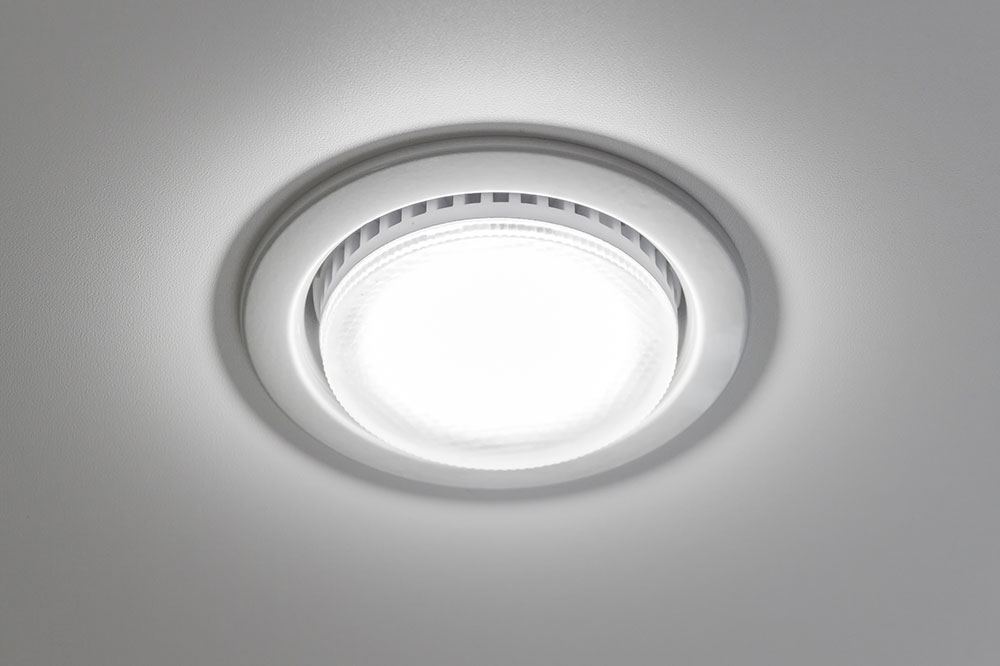5 factors to consider while choosing LED light fixtures
Light Emitting Diode (LED) lights have a lifespan of over 35,000 hours, which is at least 40 times more than an incandescent light. Plus, LED lights are energy-efficient, making them an excellent option for light fixtures in private and commercial spaces. Here are a few things to remember while choosing LED light fixtures:
- Understand the difference
Most people confuse LED bulbs and integrated LEDs. LED bulbs are a simple replacement for conventional incandescent bulbs and have a single bright LED.

On the other hand, built-in or integrated LEDs are arrays of LED lights wherein the LED light source is built into the design. LED bulbs limit design possibilities and are mostly used for small to medium spaces, whereas integrated LEDs, due to their flexibility, can illuminate larger spaces and allow for innovative designs. Use dimmers
If you want to make LED light fixtures more energy-efficient and reduce your electricity bill, choose LED light fixtures that can be integrated with dimmers. Just like a fan regulator, dimmers allow you to control the brightness of the LED, and smart LEDs allow you to control the same using phone apps. That said, use only LED-compatible dimmers to prevent flickering and abnormal wear on the light. Choose LEDs with high Color Rendering Index (CRI)
CRI defines how well a light source renders color as compared to sunlight. CRI ratings range from 0-100, and the CRI is higher as the LED quality improves. So, look for LED lights with CRI ratings between 90 and 100. For reference, streets, warehouses, and parking lots typically have lights with poor CRI. Consider the color temperature
This is one of the most important factors to consider when choosing LED light fixtures, and it is a measurement of a light’s appearance. LEDs are known for their wide range of color temperatures, but many prefer a warm white as it’s ideal for living spaces. Check the light intensity
Earlier, many bought light fixtures by checking the measurement of electricity used to power them (watts), but LED lights fixtures’ brightness is measured in terms of “lumens.” LED lights’ efficiency can be gauged from the fact that they take 25-28 watts to produce 2600 lumens as opposed to incandescent lights that use 150 watts for the same.
If you want to make LED light fixtures more energy-efficient and reduce your electricity bill, choose LED light fixtures that can be integrated with dimmers. Just like a fan regulator, dimmers allow you to control the brightness of the LED, and smart LEDs allow you to control the same using phone apps. That said, use only LED-compatible dimmers to prevent flickering and abnormal wear on the light.
CRI defines how well a light source renders color as compared to sunlight. CRI ratings range from 0-100, and the CRI is higher as the LED quality improves. So, look for LED lights with CRI ratings between 90 and 100. For reference, streets, warehouses, and parking lots typically have lights with poor CRI.
This is one of the most important factors to consider when choosing LED light fixtures, and it is a measurement of a light’s appearance. LEDs are known for their wide range of color temperatures, but many prefer a warm white as it’s ideal for living spaces.
Earlier, many bought light fixtures by checking the measurement of electricity used to power them (watts), but LED lights fixtures’ brightness is measured in terms of “lumens.” LED lights’ efficiency can be gauged from the fact that they take 25-28 watts to produce 2600 lumens as opposed to incandescent lights that use 150 watts for the same.
Disclaimer:
The content provided on our blog site traverses numerous categories, offering readers valuable and practical information. Readers can use the editorial team’s research and data to gain more insights into their topics of interest. However, they are requested not to treat the articles as conclusive. The website team cannot be held responsible for differences in data or inaccuracies found across other platforms. Please also note that the site might also miss out on various schemes and offers available that the readers may find more beneficial than the ones we cover.















